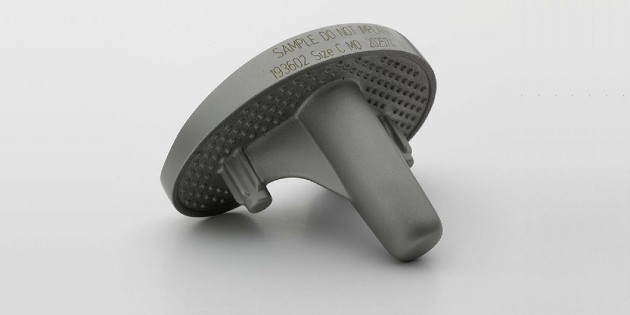Medially Stabilised Knees in the Literature, Part 1 – Fixation

Medially stabilised knees stand out in the literature for patient satisfaction and feeling of normality, but some do better than others in functional measures and survivorship. So-called medially stabilised knees are not all the same and this series of articles reviews key differences observed in the literature.
Introduction
This year’s Forever Active Forum featured a review of the literature on medially stabilised knees by David Wood1. In a short series of articles we expand on the session to discuss factors that can make a difference, including fixation, technique, stability, and the all-important third compartment.
Part 1 – Fixation
The MRK™ and SAIPH® knees are not the result of simply adding a ball-and-socket articulation to the medial side of an existing TKR. The MRK™ evolved from the FS knee, a single-radius cruciate-sacrificing knee, implanted with bony resections determined by assessing soft-tissue tensions. The FS knee provided equal stability on the medial and lateral sides and the tibial bearing restricted excessive AP and axial rotation. To achieve stability in this way without increasing the incidence of tibial loosening required a suitable fixation interface. The FS knee design was proven to work with, for as long it remained in use, a significantly lower risk of revision than its contemporaries2,3,4.
Other manufacturers have introduced a ball-and-socket asymmetric tibial constraint to platforms with the same traditional ‘keel’ tibial design used on unconstrained bearing options (Figure 1). Some have also produced cementless component versions. Higher revision rates5,6, particularly tibial loosening7 have been associated with these combined design characteristics.

The MRK™ however maintained the stem-and-pegs fixation interface of the FS knee with a mechanical interlocking stippled cement interface (Figure 2). This differs from traditional keel designs that are less resistant to rotational torque at the implant-bone interface.
The first clinical follow up on MRK™ patients who had received the implant from 1994 commented specifically on the matter and showed that the increased congruence of the asymmetric tibial bearing had not increased the rate of loosening8. From over 12,000 procedures recorded by the NJR over 15 years, the MRK™ has been revised for aseptic loosening of the tibia significantly fewer times (p<0.001) than all other TKRs in the NJR9.
The SAIPH® Knee also features an optimised stem-and-pegs design with a stippled cement interlocking interface with additional anti-rotation fins. NJR data shows that from 900 procedures over 8.6 years not one SAIPH® has been revised for aseptic loosening of the tibia10.
With the right combination of stability and fixation design, as described in our latest news items, the MRK™ and SAIPH® are consistently reported with lower rates of revision than their contemporary devices5,6.
- Wood D. Medial Stabilised Knee Registry and Literature Results. Forever Active Forum, Melbourne, 2018.
- Dept. of Orthopedics, Lund University Hospital. The Swedish Knee Arthroplasty Register: Annual Report 2007. http://www.myknee.se/pdf/110_SKAR2007_Engl1.2.pdf
- Dept. of Orthopedics, Lund University Hospital. The Swedish Knee Arthroplasty Register: Annual Report 2008. http://www.myknee.se/pdf/112_SVK_2008Engl_1.1.pdf
- Dept. of Orthopedics, Lund University Hospital. The Swedish Knee Arthroplasty Register: Annual Report 2009. http://www.myknee.se/pdf/113_SVK2009ENGL1.0.pdf
- National Joint Registry. NJR 14th Annual Report, 2017: http://www.njrreports.org.uk/
- Australian Orthopaedic Association. NJRR Hip and Knee Arthroplasty, Annual Report 2017: https://aoanjrr.sahmri.com/
- Australian Orthopaedic Association. NJRR Hip and Knee Arthroplasty, Annual Report 2017: Prosthesis Investigations, Advance/Advance: Figure 2. https://aoanjrr.sahmri.com/annual-reports-2017
- Mannan K and Scott G. The Medial Rotation Total Knee Replacement – A Clinical and Radiological Review at a Mean Follow-up of Six Years. JBJS-Br. 2009; 91-B: 750-756.
- National Joint Registry. Implant Summary Report for the MRK™. Summary.Report.KP_Femoral_MRK.16/08/2018
- National Joint Registry. Implant Summary Report for the SAIPH® Knee. Summary.Report.KP_Femoral_Saiph.16/08/2018